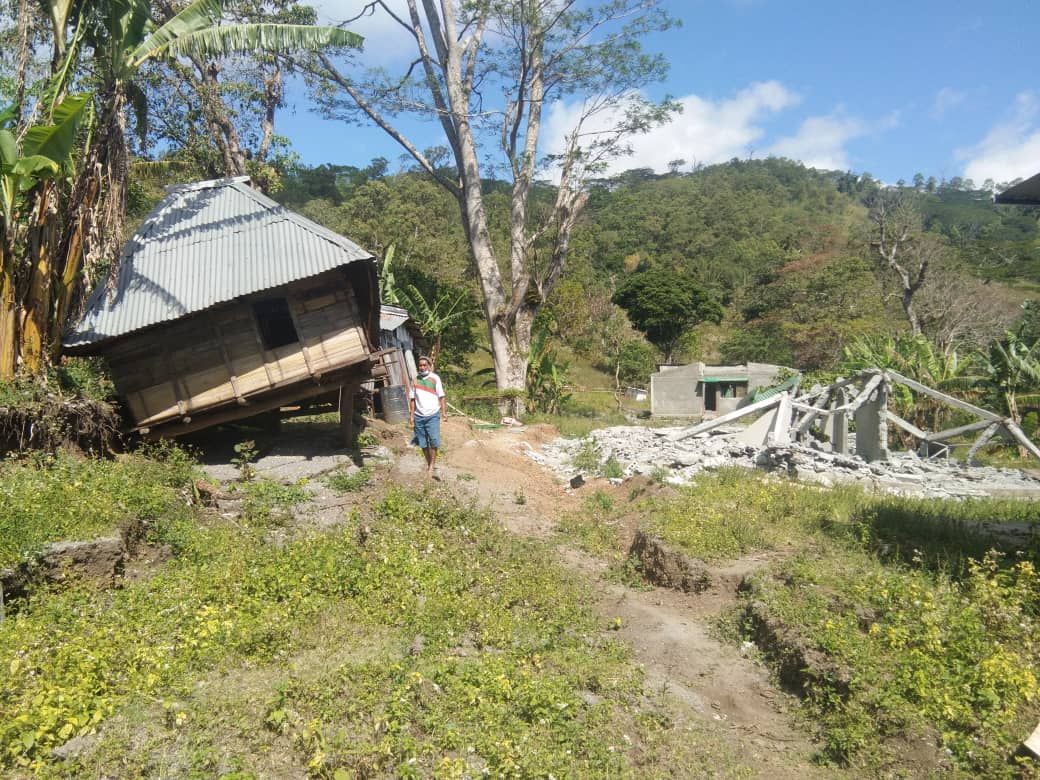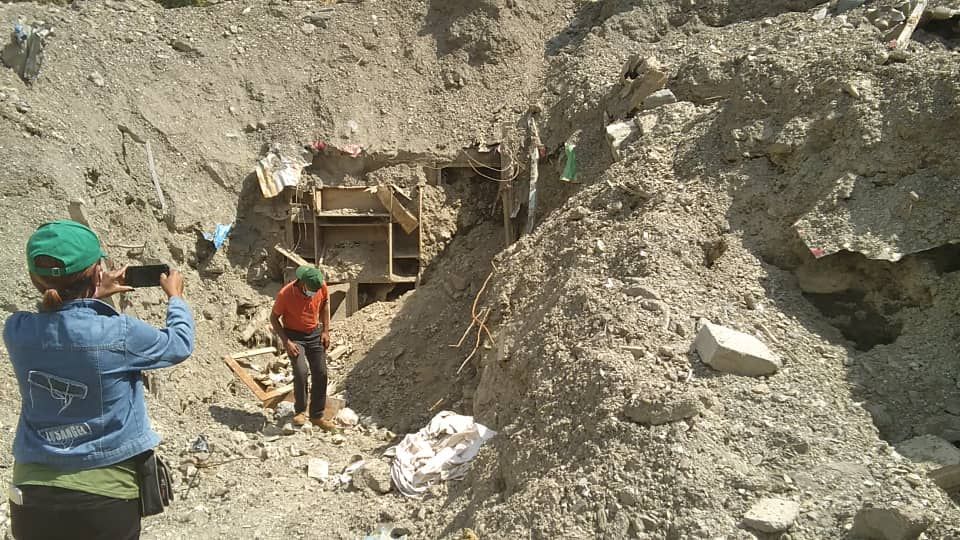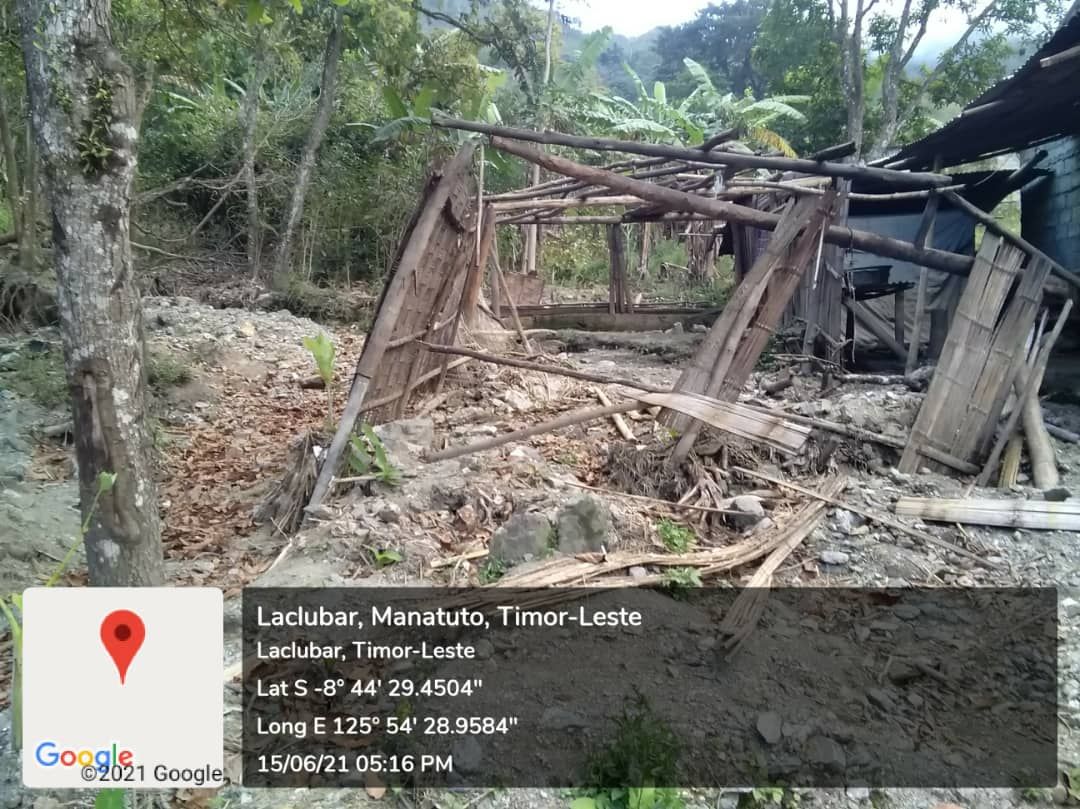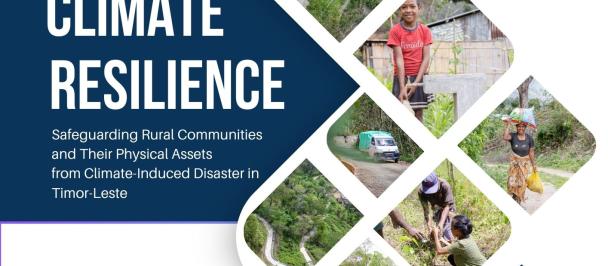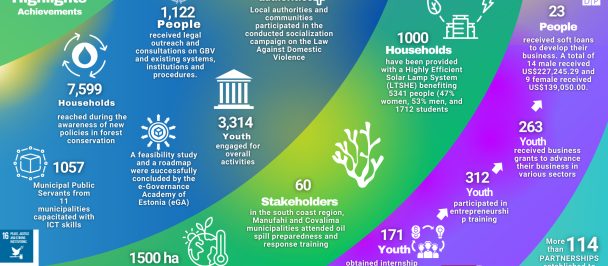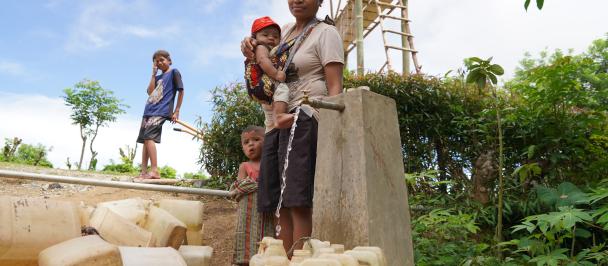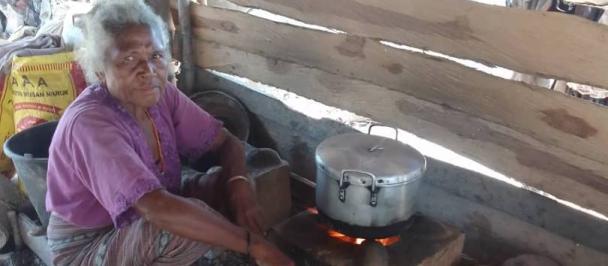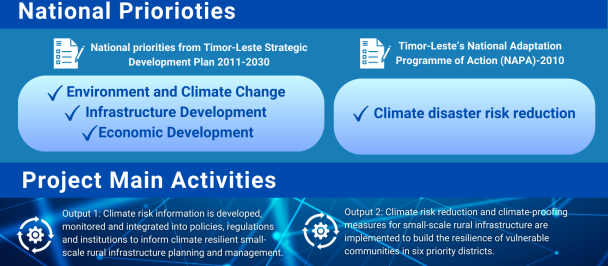“Government should help us to build strong houses away from vulnerable locations”, Ms Decosta appeals.
Vulnerable communities call for resilient recovery
June 27, 2021
Ms. Rosa Salsinia Decosta, who lives in Tarabula (Maulau), a small village in Maubisse, Ainaro Municipality, says that in her 70 years of life she never saw so much rain and for so long as in the Easter Weekend. At about 4 am, on April 4, 2021, continuous heavy rain caused a landslide that buried her neighbour along with his wife and three children, as their family home was dragged by tons of mud and dirt. Two months after the flash floods, landslides, and damage to houses, buildings, city roads and highways caused by cyclone Seroja that affected 30,367 households across the entire country, there is still a sense of insecurity among many affected communities.
“Government should help us to build strong houses away from vulnerable locations”, Ms Decosta appeals. She was talking to the team that UNDP had convened to conduct the Household and Building Damage Assessment (HBDA), following a request from the Government, in partnership with the Ministry of State Administration, the Universidade Nacional Timor Lorosa’e (UNTL) and the General Directorate of Statistics (GDS). Starting on June 2nd , the HBDA team collected data in five of the most impacted municipalities (Dili, Liquiçá, Manatuto, Baucau and Ainaro) to inquire about the damages caused by the Cyclone Seroja.
HBDA was used to assess the degree of physical damage caused to the buildings and the impact on the livelihoods of the households caused by the cyclone, to inform a crisis response and early recovery strategy and plans. Working in partnership with UNDP’s Surge Data Hub, field teams conducted around 860 interviews, with 48% being with women. Enumerators visited a total of 737 buildings in 10 Aldeias (sub-villages) using UNOSAT satellite images and GPS points, with visits to 586 households and businesses across the five municipalities. The survey used questionnaires for livelihoods assessment and customized forms to assess damage to the buildings using Kobo Toolbox.
Participants described damage to houses, crops, irrigation canals, electricity, and other infrastructure. In some cases, households which suffered damage in the April floods and landslides reported further damage from more recent rains – within a space of a week prior to the visit in June. Teams on the ground also met with communities and families who lost people and where the impact of the floods was strongly felt.
Apart from the results of the assessment itself, the visits were also important to understand existing challenges in undertaking such surveys and the current difficulties that many families, particularly vulnerable households, are facing. Communities who participated in the survey expressed concerns, in some cases, as to what will happen next, specifically how the assessment will be used for concrete actions by the Government to respond to damages and livelihoods challenges.
The data collected using the Household and Building Damage Assessment (HBDA) Toolkit will be analysed and visualized using the Microsoft Power BI platform. Further analysis of all this data will assist the Government in preparing evidence-based recovery plans and in prioritizing risk-informed rehabilitation of both buildings and people’s livelihoods.

 Locations
Locations